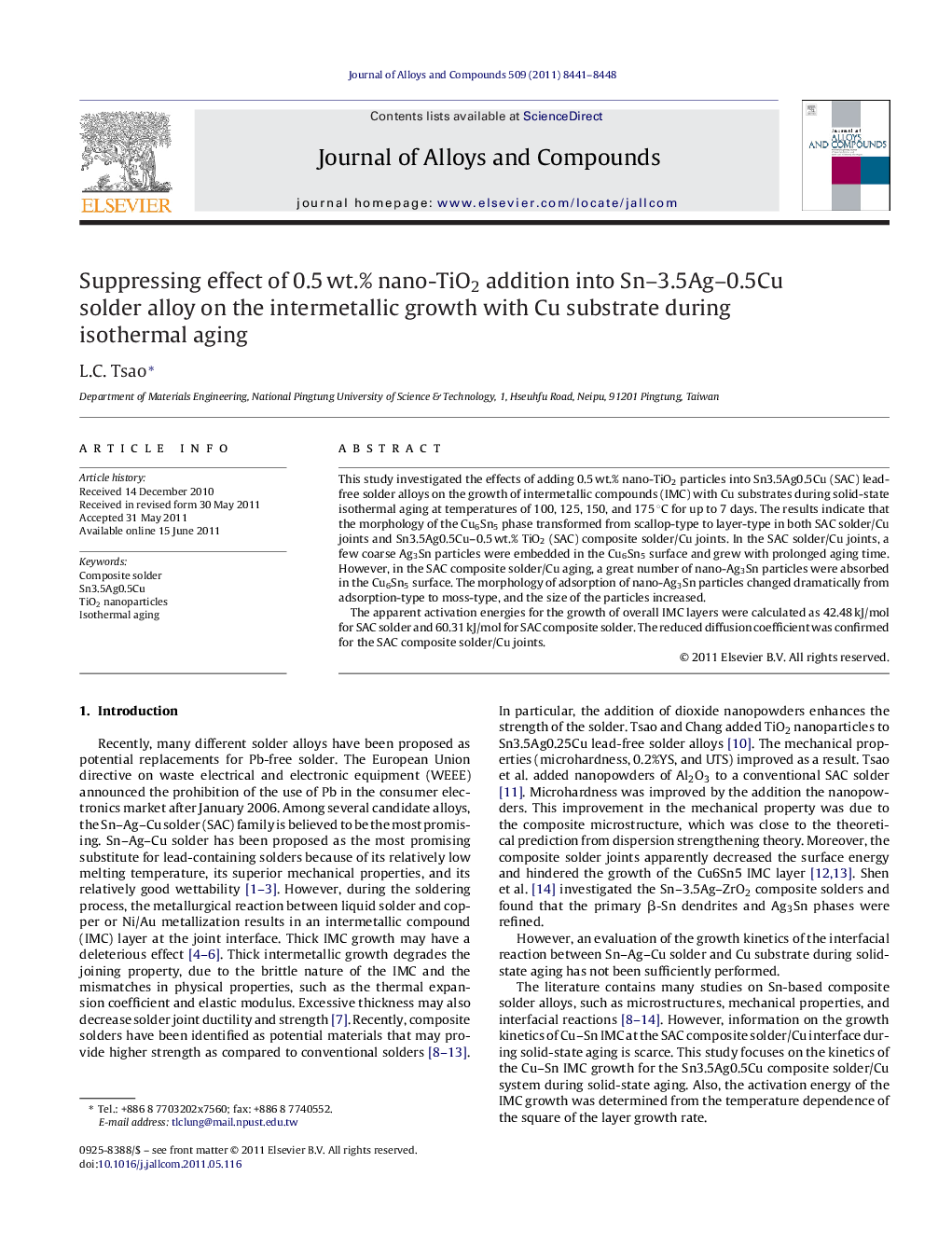| کد مقاله | کد نشریه | سال انتشار | مقاله انگلیسی | نسخه تمام متن |
|---|---|---|---|---|
| 1617121 | 1005678 | 2011 | 8 صفحه PDF | دانلود رایگان |

This study investigated the effects of adding 0.5 wt.% nano-TiO2 particles into Sn3.5Ag0.5Cu (SAC) lead-free solder alloys on the growth of intermetallic compounds (IMC) with Cu substrates during solid-state isothermal aging at temperatures of 100, 125, 150, and 175 °C for up to 7 days. The results indicate that the morphology of the Cu6Sn5 phase transformed from scallop-type to layer-type in both SAC solder/Cu joints and Sn3.5Ag0.5Cu–0.5 wt.% TiO2 (SAC) composite solder/Cu joints. In the SAC solder/Cu joints, a few coarse Ag3Sn particles were embedded in the Cu6Sn5 surface and grew with prolonged aging time. However, in the SAC composite solder/Cu aging, a great number of nano-Ag3Sn particles were absorbed in the Cu6Sn5 surface. The morphology of adsorption of nano-Ag3Sn particles changed dramatically from adsorption-type to moss-type, and the size of the particles increased.The apparent activation energies for the growth of overall IMC layers were calculated as 42.48 kJ/mol for SAC solder and 60.31 kJ/mol for SAC composite solder. The reduced diffusion coefficient was confirmed for the SAC composite solder/Cu joints.
► Morphology and growth kinetics of the Cu–Sn layer during aging reactions between Sn3.5Ag0.5Cu–0.5nano-TiO2 composite solder and Cu substrate.
► The great quantity of nano-Ag3Sn particles adsorbed on the Cu6Sn5 surface at the composite solder/Cu interface during aging.
► The kinetic activity of Cu–Sn layers reduced due to the morphology of adsorption of nano-Ag3Sn particles changed dramatically from adsorption-type to moss-type.
Journal: Journal of Alloys and Compounds - Volume 509, Issue 33, 18 August 2011, Pages 8441–8448